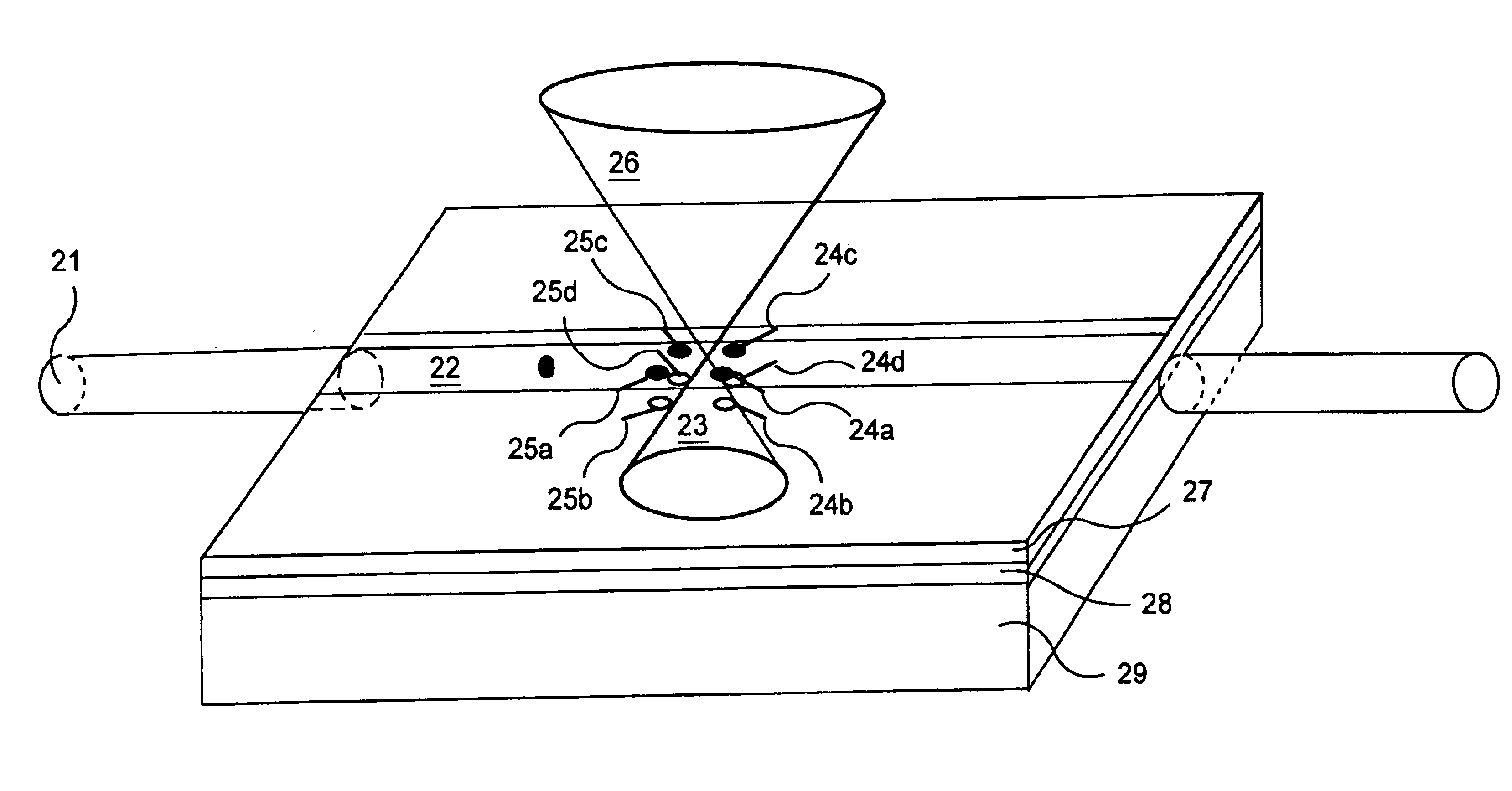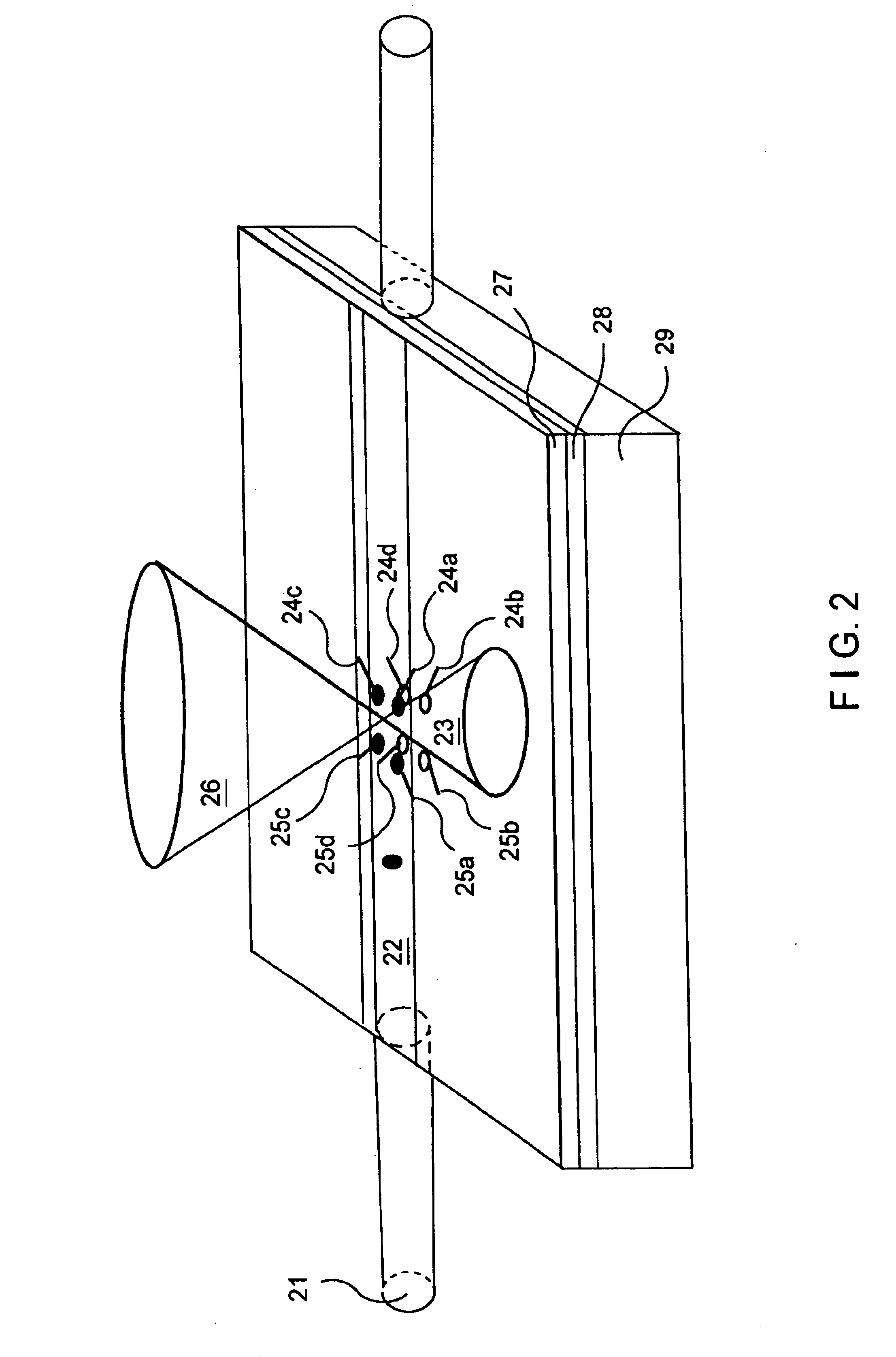Method and device for measuring, calibrating and using laser tweezers
a laser tweezer and laser tweezer technology, applied in the direction of optical radiation measurement, diaphragm, immobilised enzymes, etc., can solve the problems of difficult repeating measurements using the same particle, high equipment requirements, and high equipment requirements, and achieves increased electrical control signals and numerical apertures high.
- Summary
- Abstract
- Description
- Claims
- Application Information
AI Technical Summary
Benefits of technology
Problems solved by technology
Method used
Image
Examples
Embodiment Construction
[0044]The invention will be described in the following referring to the combination of an octopole field cage to form the capture area and an individual capture laser to form the optical cage. The invention can however be realized with any field cage shape or several laser beams.
[0045]FIG. 1 schematically illustrates an enlarged section of a microsystem according to the invention. The diagram only shows a microelectrode arrangement consisting of the microelectrodes 11-18 (without control lines) and a microscopic particle 113 between the microelectrodes in a suspension liquid. The microelectrodes are flat on opposing walls of the microsystem structure, and e.g. the x-y plane coincides with a substrate plane. The microelectrodes 11-18 are set up to be supplied with electrical potentials to form field gradients with one minimum field level. The technology of the electrode control to generate a specific minimum level is known per se and will therefore not be described in detail. The pos...
PUM
| Property | Measurement | Unit |
|---|---|---|
| size | aaaaa | aaaaa |
| focal length | aaaaa | aaaaa |
| sizes | aaaaa | aaaaa |
Abstract
Description
Claims
Application Information
 Login to View More
Login to View More - R&D
- Intellectual Property
- Life Sciences
- Materials
- Tech Scout
- Unparalleled Data Quality
- Higher Quality Content
- 60% Fewer Hallucinations
Browse by: Latest US Patents, China's latest patents, Technical Efficacy Thesaurus, Application Domain, Technology Topic, Popular Technical Reports.
© 2025 PatSnap. All rights reserved.Legal|Privacy policy|Modern Slavery Act Transparency Statement|Sitemap|About US| Contact US: help@patsnap.com



